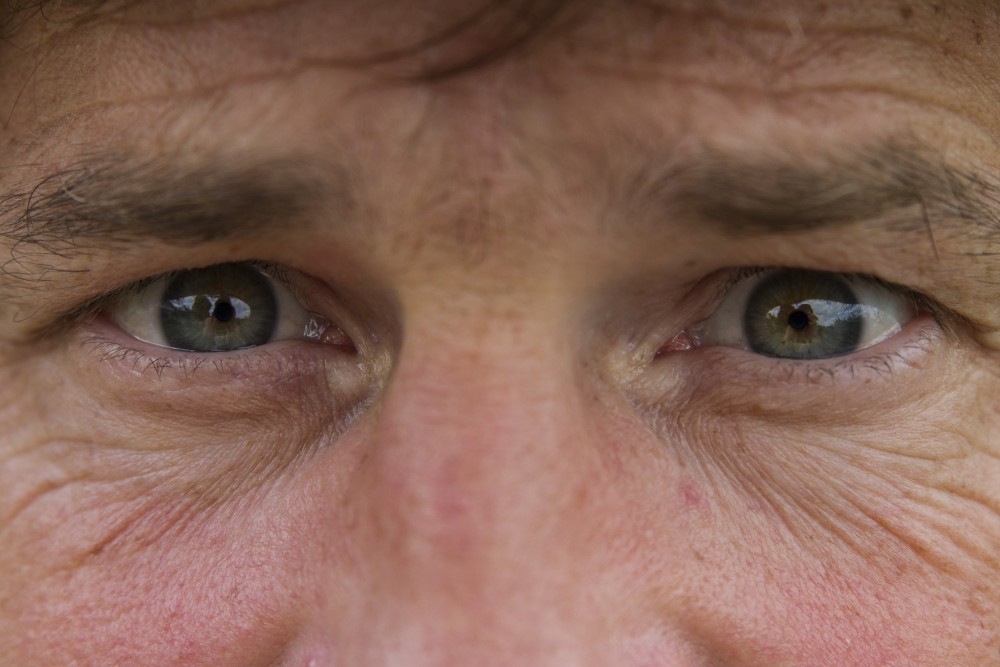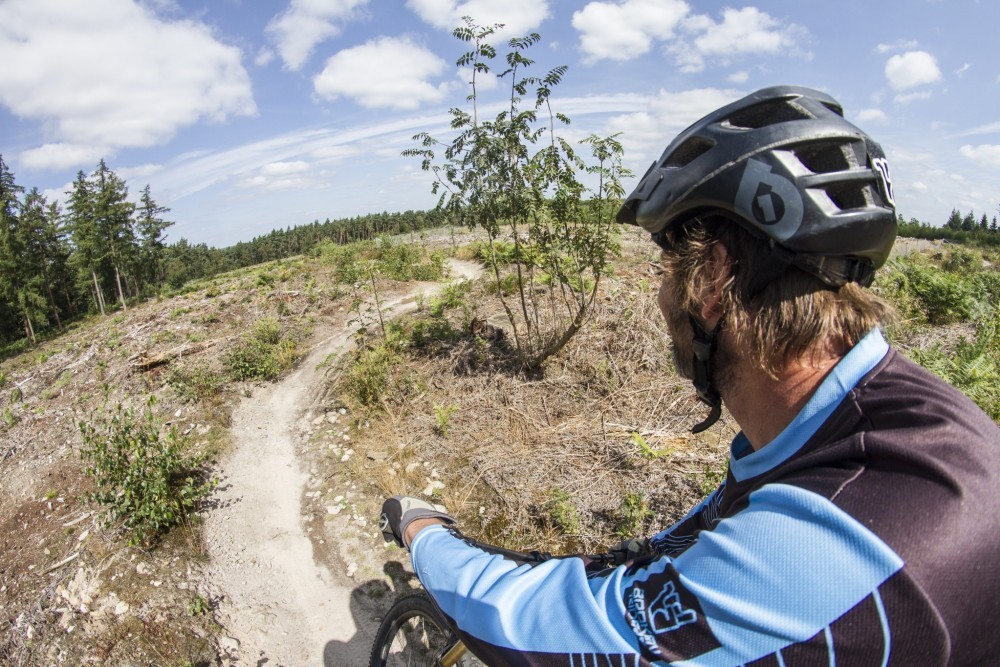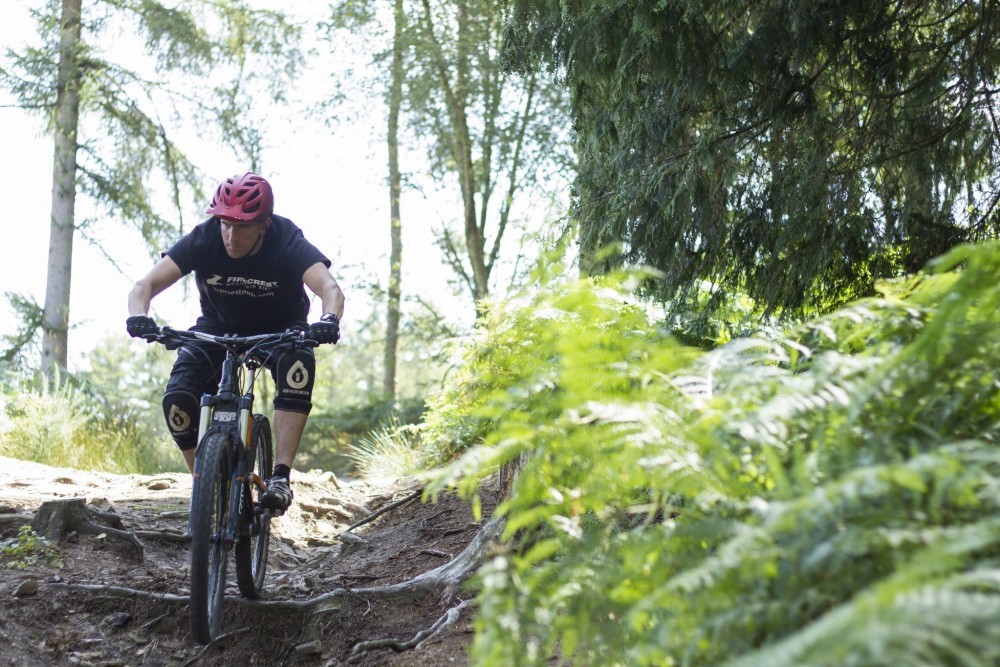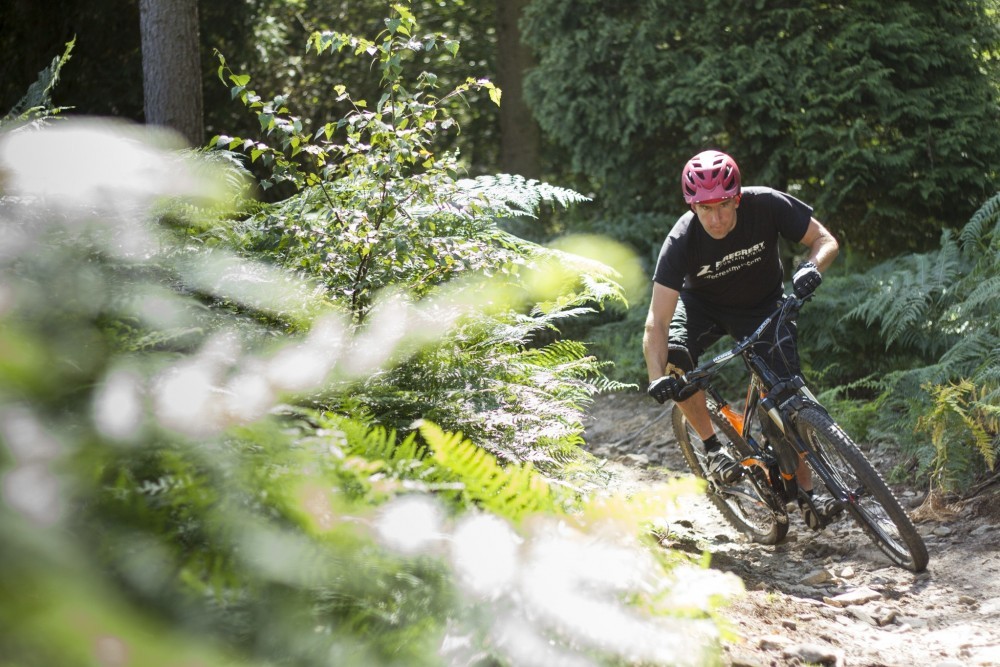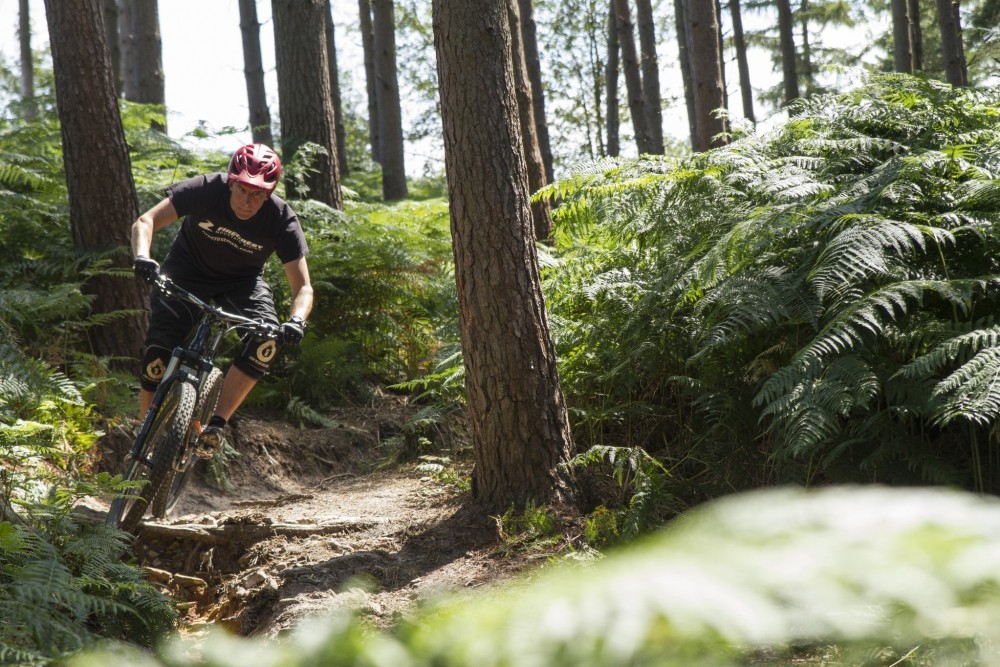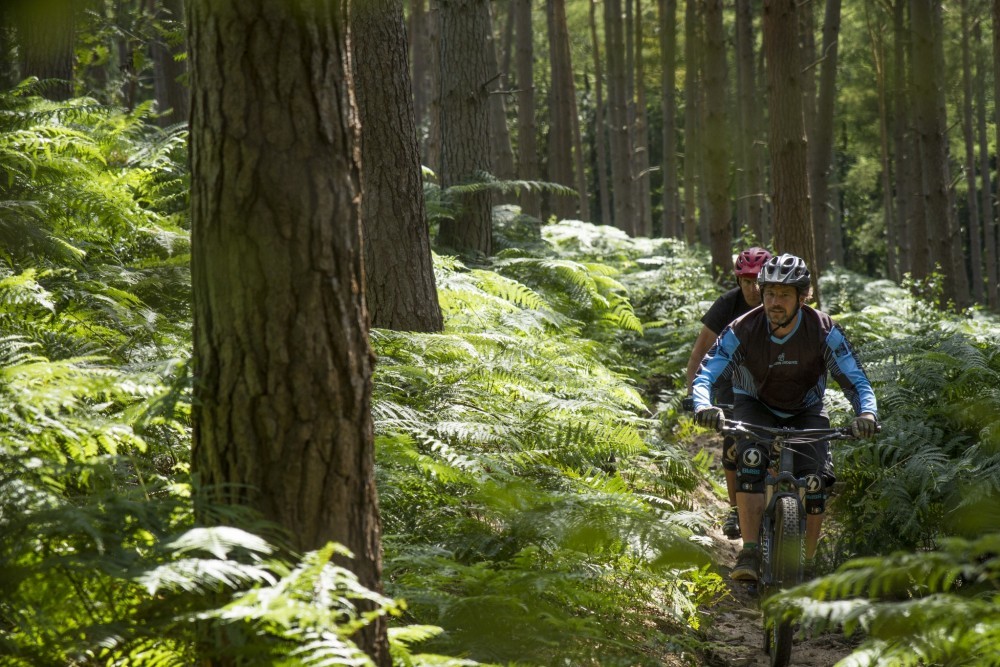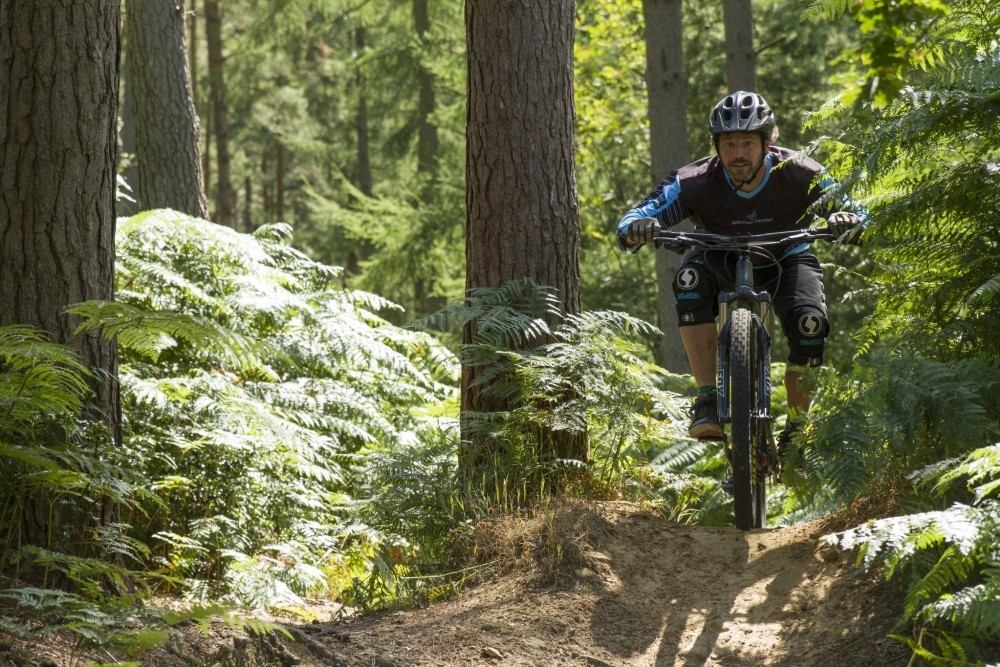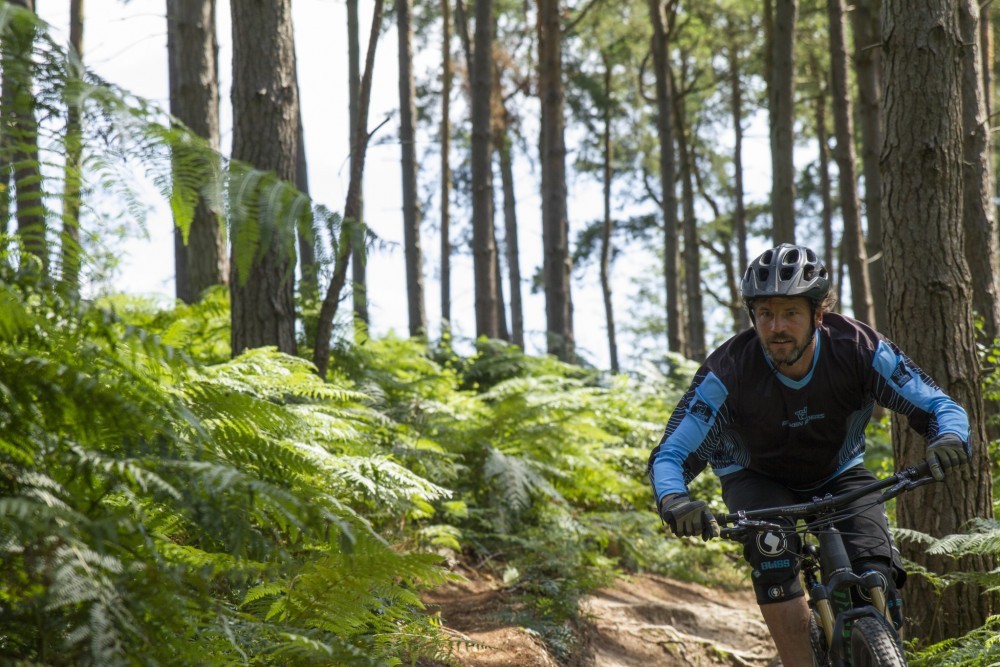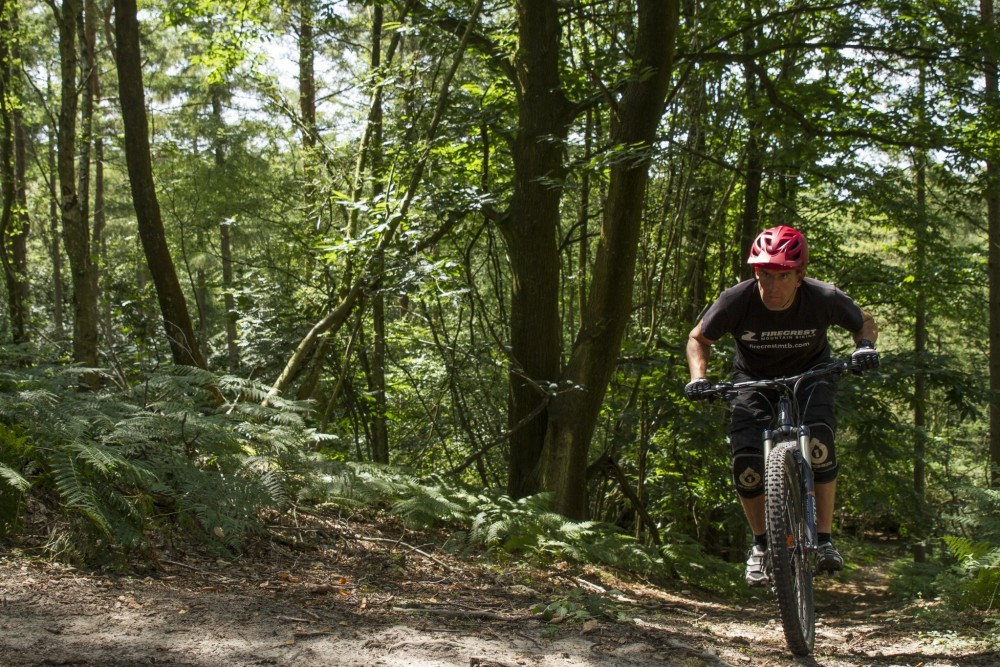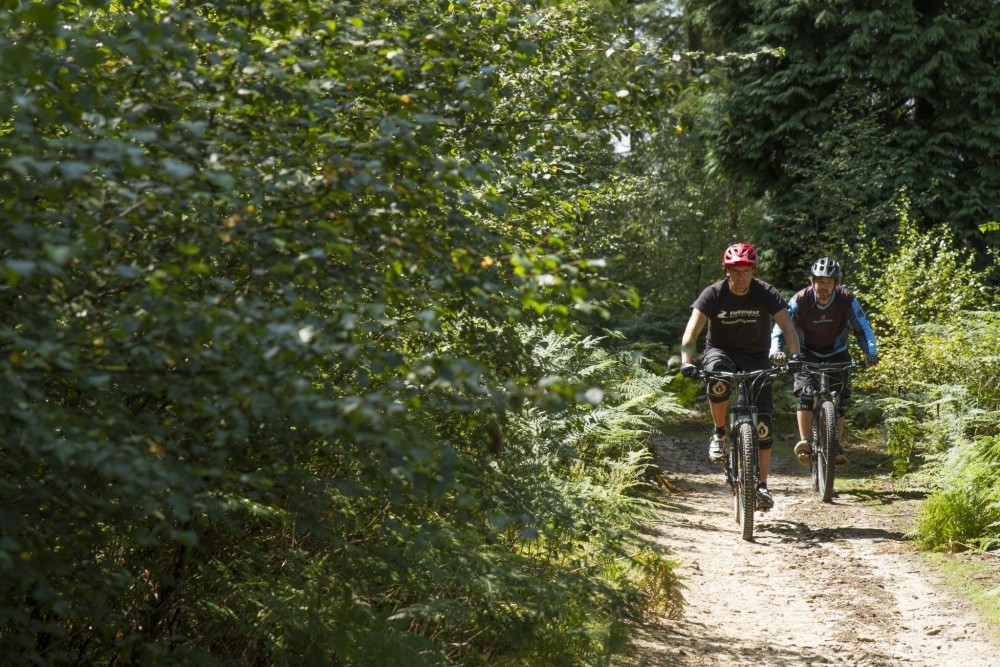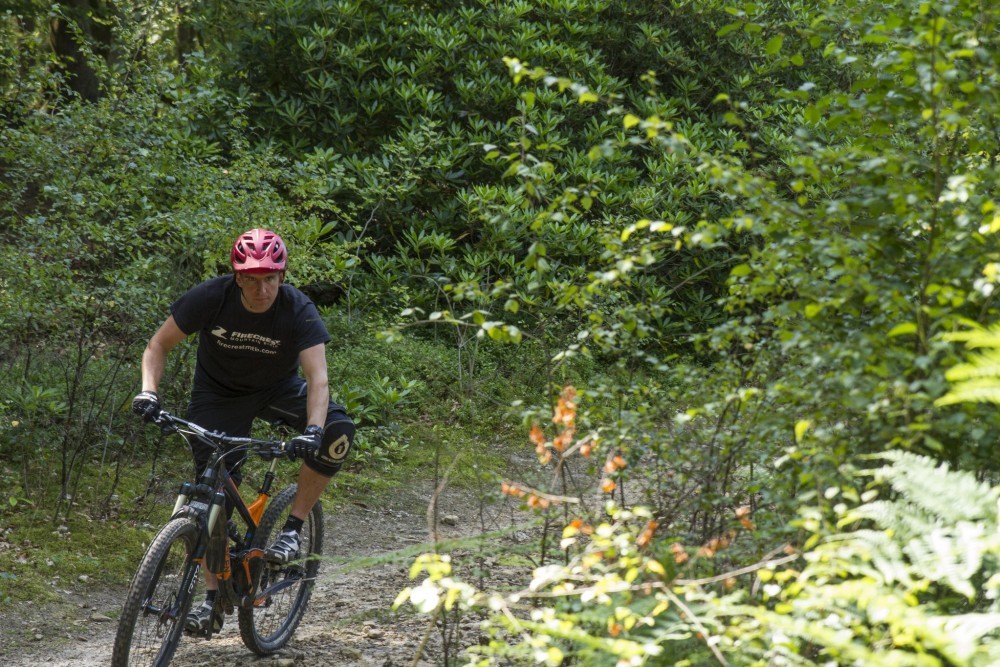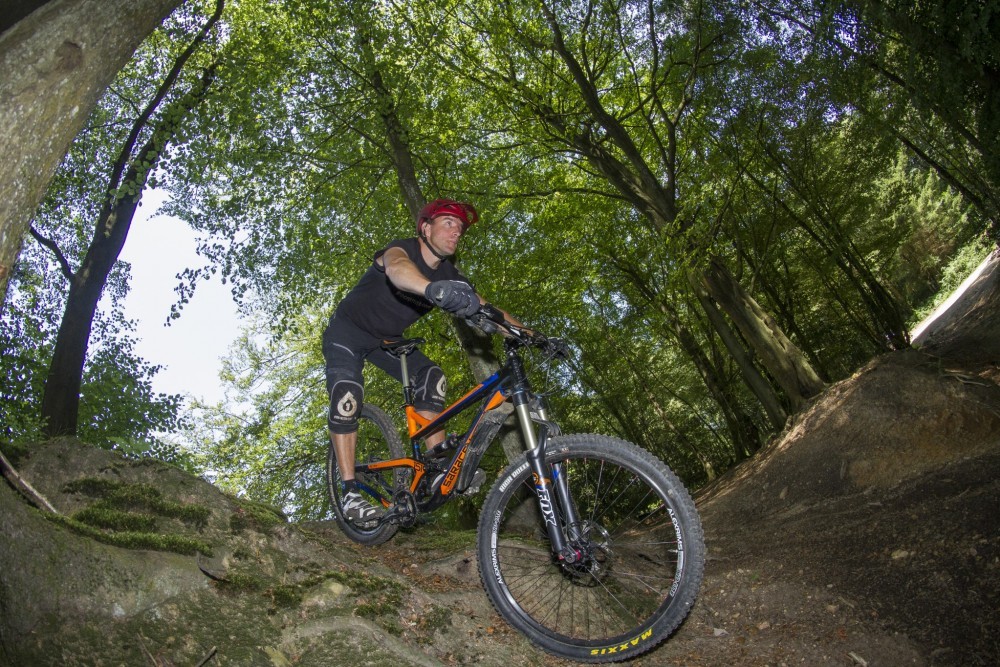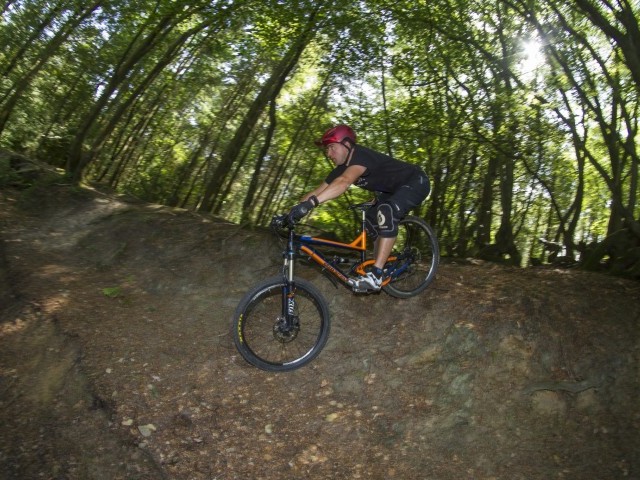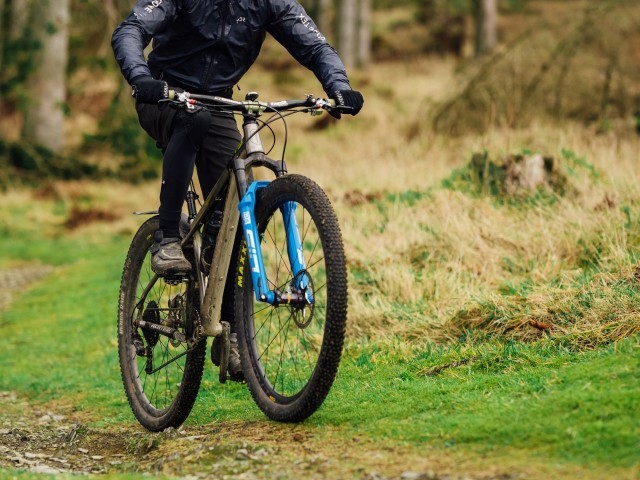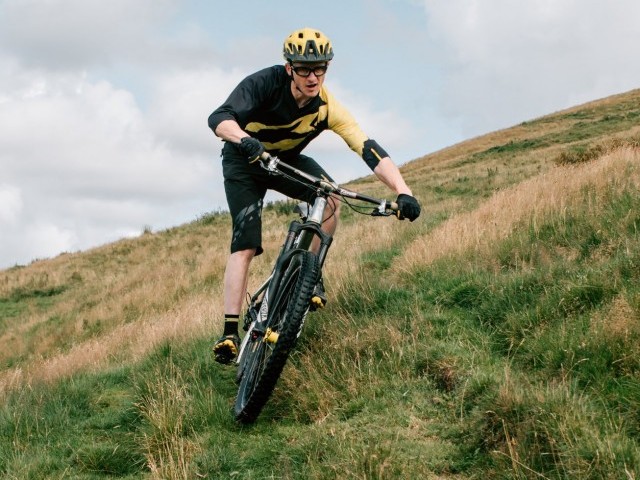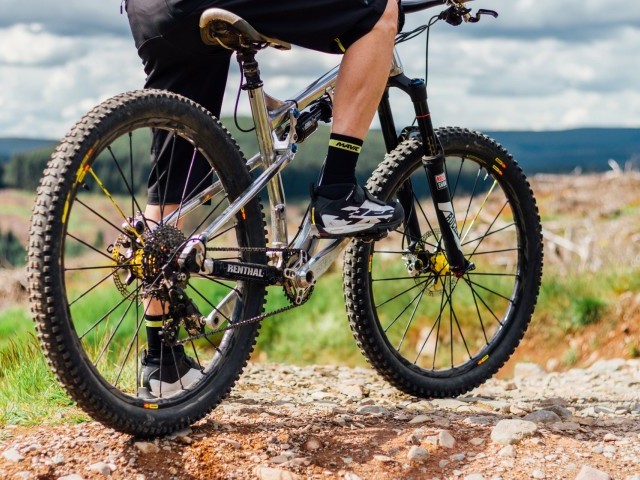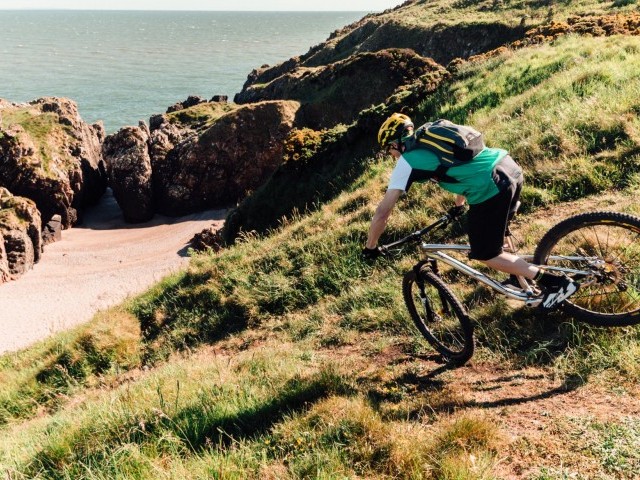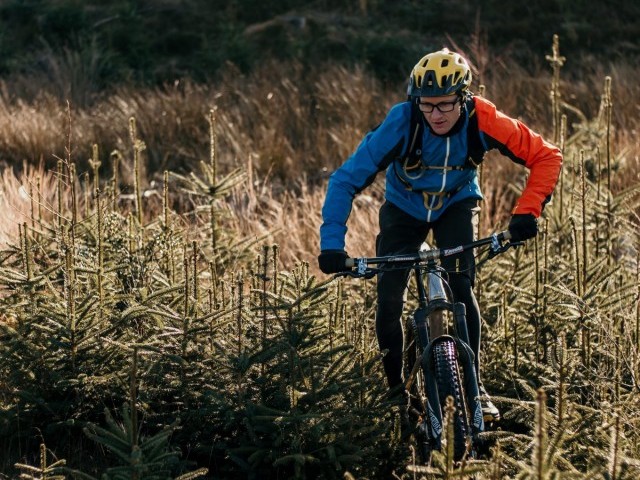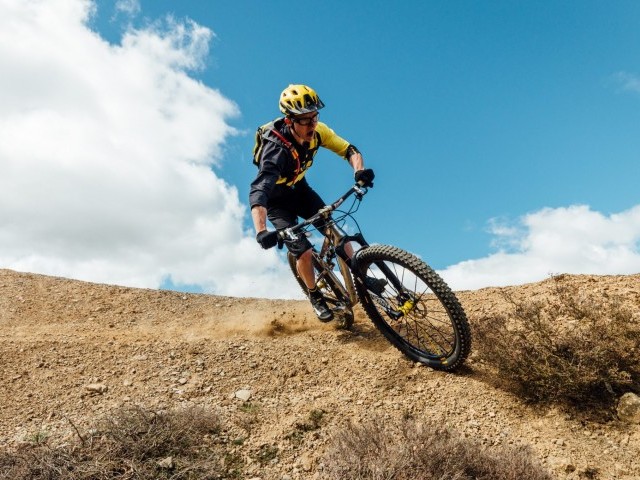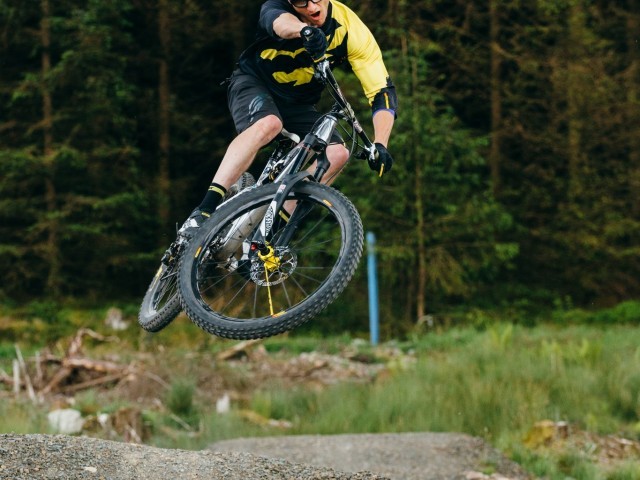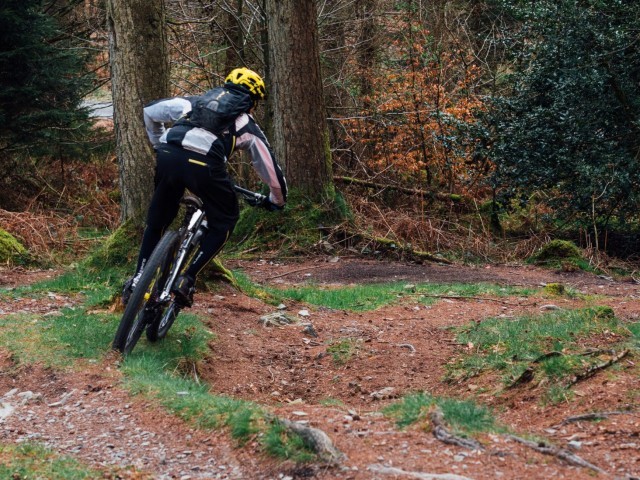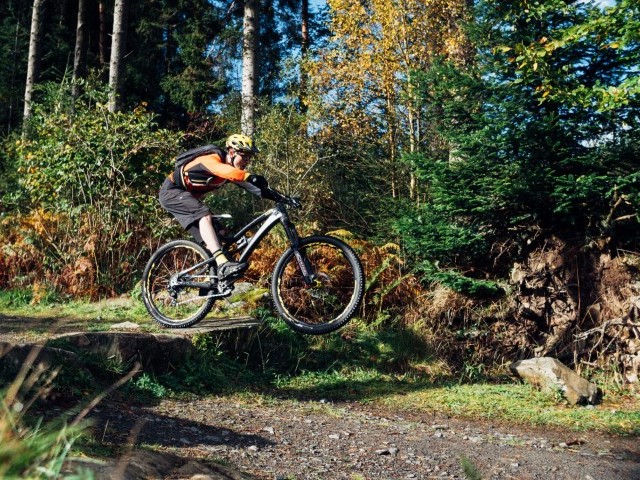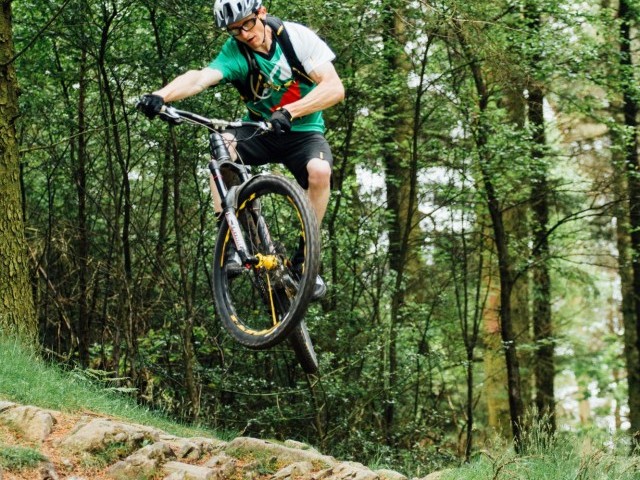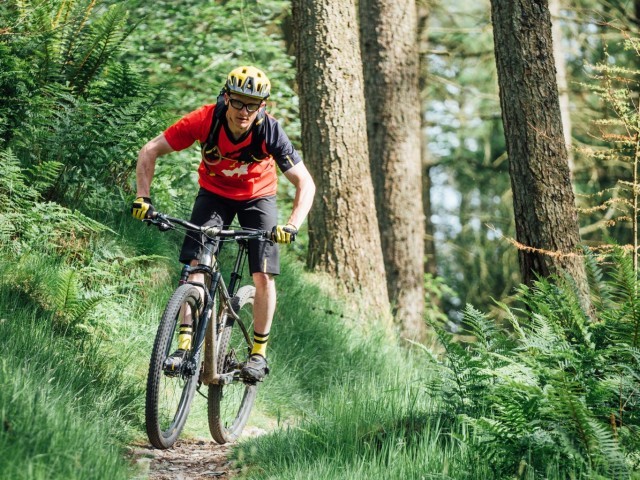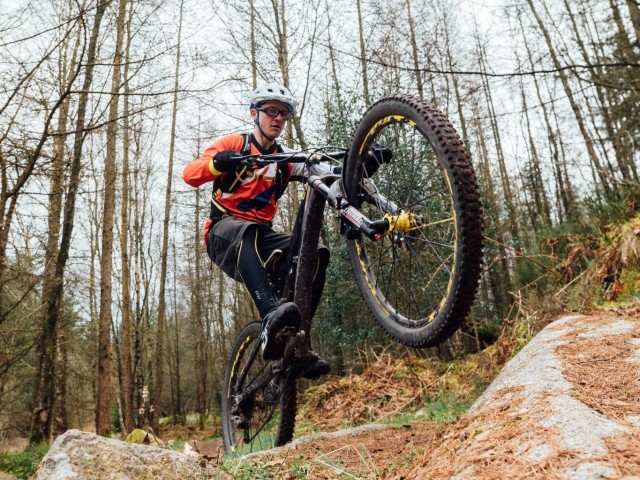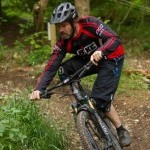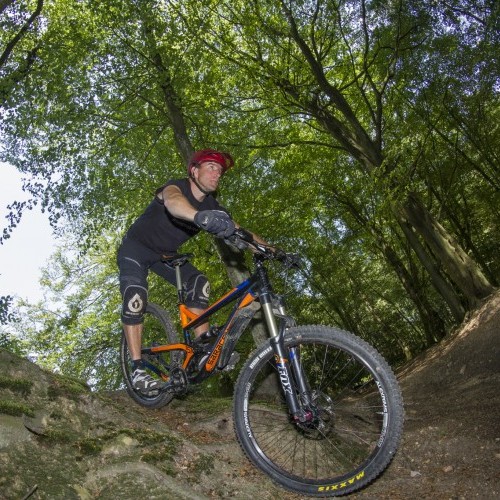
Re Vision
Technique / Skills
Introduction
In every article we have written, covering all manner of riding scenarios and areas of skills development, we’ve referred to the core physical skill of looking. Again and again we have highlighted its importance in achieving improved riding performance. The art of 'looking' is one of the easiest for riders to identify and know how to address, but mastering it is one the hardest.
Nearly every aspect of riding can be improved by looking ahead and this is definitely a pedal stroke or two in the right direction. But even looking to (or through) the right point in the trail has its limits in terms of performance enhancement. What separates elite level performers when it comes to perhaps the most obvious of skills? Surely it is possible for our looking skills to improve beyond where we look and the quality of our eyesight?
This issue we take a closer look, delve beyond the clearly apparent and examine in more detail how to improve this core skill. As ever, exercising some grey matter might help more than simply pounding out the miles on the trail, riding along repeating the mantra "look ahead, look ahead, look ahead."
On closer inspection you'll see the there quite literally is more to looking than that that meets the eye.
With more understanding, riders from Mr Magoo to Steve Austin can improve their looking skills. 20:20 vision is not the solution and a trip to Specsavers (other opticians are available) is not the only answer. Highly developed looking skills do not rely purely on genetic disposition towards perfect eyesight. As with every one of our skills, looking can be improved through deliberate and targeted practice and improving our understanding of the process, what we see leads to what we do.
We will look at some of key trail scenarios where the trail can 'poke you in the eye' and knock you off your 'A' game but just as importantly we need to understand how to actually develop the skill of looking... not just apply it.
If you on occasion fail to see the wood for the trees, this one is for you.
When it comes to improving the skill of looking it is useful to start by understanding more about 'how' we see, how images are constructed and why and how champions in a number of fields utilise ‘looking’ to a greater extent than us mere mortals.
By developing a better understanding how champions have developed their skills, what makes them 'see' so much more of what is relevant, process what they see faster and more correctly, hopefully we can take steps towards doing the same
Before we apply 'looking' to the specifics of trail riding let's start with some of the science behind that art.
How do we see?
To be honest, how the eye works is only a small part of the equation. The bigger question is how does the eye process what it takes in? Understanding this may help develop faster and more appropriate responses even when we are travelling at great speed over varied terrain. Let us start with the simple explanation of how the eye sees and how it is then transformed and interpreted by the brain. Light bounces off objects and this is focussed on the retina via the eyes’ lens. The retinal image is sent to the brain where it is experienced. These retinal images have been described as ‘vague and fragmented’. This 2 dimensional image is transformed by the brain into the 3 dimensional “vision” that we experience or 'see', this is achieved though a process called “fusion”. This requires a huge amount of processing power on the part of the brain and relies on not just what goes in but also on what has gone in before.
Richard Gregory’s research asserts that 'Bottom Up' sensory information, (that which goes into the eye) is overridden by 'Top Down' knowledge (that which has been experienced before). There are twice as many fibres carrying information down from the knowledge areas of the brain than travel up from the eyes. It is the top down information that helps us quickly and accurately build the true picture. Just as when listening to someone we can quickly fill in any gaps that might have been filled with white noise, based upon our extensive knowledge of language, so too can we do the same when it comes to vision.
A greater knowledge base developed by a more experienced rider fills in the gaps faster and more accurately - hence they see the whole picture more clearly and more rapidly than a less experienced rider who has not trained their brain as effectively and has less experience or data upon which to draw. Experts in any field of sport do not necessarily have better eyesight per se, but they have more knowledge gained from greater levels of experience, from which to sculpt sensory information into a new form. In short they can see more in a shorter space of time...or indeed a blink of the eye!
Matthew Syed in his book 'Bounce' draws upon comparisons of how chess Grand Masters can ascertain more information upon which to make the most effective decision from a brief glimpse of a board than a novice. How they do this is not a skill they are born with but one they develop. Rather than trying to see every piece and remember its placement on the board they see patterns that are familiar to them from which they can quickly predict potential outcomes.
This ability, like any other skill, can only be developed over time. It is commonly recognised that it takes 10,000 hours to become an expert in a given field. The experience gained in this magic 10,000 hours fills their knowledge database from which they can draw down. Their 'purposeful practise' and experience afford them the ability to 'see' from patterns. In doing so they can more effectively process more information more quickly. The chunking of information in this way allows for far more effective interpretation of what the eye sees and importantly a far more effective and accurate decision-making process in terms of how to respond.
This skill is not restricted to the world of chess… thankfully. Top sportspersons in all fields, from their experience, are able to draw down the necessary information to create images and thus respond more speedily and more correctly to visual stimuli than those with less experience.
Top performers build a better image from less inputs thanks to their ability to recognise patterns or chunk. In doing so they are effectively freeing up some of the brain’s bandwidth to allow them to respond more correctly. Added to this their reactions are also more automotive and less conscious freeing up even more of the brain's finite capacity. It is a win-win situation. A top batsman may judge the pace and placement of an incoming ball merely from the body position, or finger placement of the approaching bowler. They ‘see’ where the ball is going and can judge its trajectory not by watching the ball by recognising patterns. Not only is their perception more automated, so is their response.
In short, less thinking allows for more doing.
The good news is that this talent is not something that sporting greats are born with or exclusive to a few lucky offspring from the deep end of the vision gene pool. The bad news is that this is a skill that is developed only over time; it is based upon many hours of purposeful practice or ‘deep practise’ as others refer to it. If we are to get close to their level of performance it will take some work but there are some short cuts.
Not many of us have 10,000 hours to dedicate to the pursuit of improved performance. By identifying and understanding some key trail scenarios where our eyes might get led astray we can hopefully shortcut to a greater level of performance. As a rider we can engage in a similar process to that of a world class batsmen, tennis ace or an F1 driver when it comes to responding more quickly and more correctly whilst freeing up all important bandwidth in our often over worked brains. An important step in achieving this is recognising where we might go wrong.
The trail ahead is coming towards us by virtue of us travelling forwards but we don't need to watch it onto our tyre before deciding what to do. With the right practise and knowledge to draw down from, you too can start to recognise patterns and respond correctly and proactively rather than reactively.
The trail and its features can easily lead us to look at the wrong things, draw us in and cause problems for a rider. Some trail features and scenarios are more obvious and apparent, some subtler but equally distracting. Understanding some of the more common scenarios that can lead our vision to be impaired will help to build up our knowledge base and hopefully help us find the ‘golden thread’ down any given trail without quitting our jobs or abandoning our families to find the necessary hours to become an expert
Visual Performance Cues
These are objects or features that draw our eyes to them and effect the way we ride. Rather than focussing on the important issues, we end up paying them more attention (allowing them to distract us from the task at hand). Visual performance cues come in all manner of shapes and sizes and can be anything from tree roots to an enviable bike passing the other way. The longer we dwell on them (or are required to do so in order to create a 3D image) the more they will upset our ride by taking our attention from where it needs to be. Regardless of the form they take, we prefer to refer to them as a visual performance cues rather than identify them more precisely. Identifying them more specifically can lead a rider to look for them.
To explain this more overtly let us use the analogy of the Pink Kangaroo. If I tell you not to think of a pink kangaroo it pops straight into your brain. Likewise if I tell you not to look at the roots for example you will do the same. Changing the language allows us to adopt a new behaviour. In this instance thinking of things we see and generalising them as visual performance cues enables us to focus on looking through them rather than too them. We retrain ourselves to translate both the visual and oral input into looking 'through' rather than 'to'. For example if I arrive at the trail to be told “there are lot’s of roots on this trail” I translate that to 'there are lots of visual performance cues here that I’ll need to look through'. This starts the process of looking through before I even get to the trail.
Visual performance cues can easily encourage our focal vision into areas that can be dealt with by our peripheral vision. This can cause problems. Our focal vision works by taking in information from a far narrower field. It can flick from one thing to the next fast, but to avoid a blurring effect skips over possibly important information as it pans from one point to the next. Additionally, focussing in the peripheral zone can easily eat into our available processing power and lead to what has been referred to as ‘unintentional blindness’. Fixating our attention on a perceived threat might easily mean we fail to realise we are heading off course or about to encounter an even bigger but as yet unseen problem. Staring ‘towards’ a point will lead to a change in our sense of time perception. The closer it gets the more we are conscious of our speed, the nearer it gets the faster we feel we are travelling and the more we are likely to trigger fight and flight responses rather than respond correctly.
The trick to dealing with all visual performance cues is to look through them, not at what we fear but to where we do want to go. It can help to imagine your brain as being made up of receptors that light up green or red. By looking down and fixating on problems and danger or threat more red receptors light up. By looking up and through to where we do want to go the green receptors start to glow. By thinking in terms of green for go and red for danger we are likely to become more comfortable when we look ahead and through sections and feel more uncomfortable when looking down and only ‘to’ points on the trail. If something makes us feel good we are more likely to do it.
As a general rule, looking over the nearest high point of elevation and as far down the trail as we can see we are more likely to deal with performance cues in the right way, light up those imagined green receptors and feel good about what we are doing and have more time to do what we need to.
Framing
Trails can often be lined with solid objects (trees, rock faces etc.), these can create a picture frame effect. This draws us to look straight through the frame even if the trail doesn't go that way. Although you are not looking down (which is a good start) you are looking dead ahead for a trail that might not be there. Remember you are trying to look further down the trail not just straight ahead. Losing track of where you are going due to framing is an easy mistake to make especially in a managed forest where planting is regulated and ordered but can happen anywhere. Unlike a picture frame you can look around or through the framing on the trail. This will open up the trail and enable you to look for that all-important high point.
Lost In The Transition
Just as you may ‘get framed’, equally the changes in a trail can draw you in and lead you astray. Every transition, be it a corner or a bomb hole, a hump in the trail or the crest of a climb, can have a ‘look into’ rather than “out of”, “over” or “through”, effect. Steep to flat sections are particularly effective in suckering riders in. The eyes can struggle with the change and lock on to the apex of a transition. Looking down into the trail letting your vision stall can lead to you stalling the bike momentarily. This can, as we have seen in earlier issues, lead to you getting pushed out of the pocket and encourage you to become the accelerating mass, effectively going over the bars. If the transition is a corner it is easy to get hooked up visually, tracking the trail rather than looking through to the exit. When climbing it is important to look beyond the crest of hills, don’t let your eyes stall as you approach the summit. Even if the section immediately beyond the transition is unsighted don’t let your eyes stall. If you cannot yet see what is next don’t stop looking for it. If necessary be looking for a virtual point up and over or down and through.
The Star Wars Effect
When the trail is lined on one side or both it is easy for the brain to start considering how close we are to connecting with whatever it is lining the trail. This is ‘red receptor' heaven, those puppies will be glowing like the Blackpool illuminations if you let them. In terms of a ‘concentration ladder’ you will be fixed on that bottom rung or ‘where am I’ rather than the ‘where am I going’. If you don’t like skin on your knuckles it is easy to remove just by asking your self the question 'will I fit through there'. The chances are that the answer to this question is yes, you will, but whether you do or not depends more on looking to where you want to be rather than where you are now. Using focal vision to judge the gap between two objects takes more time and more conscious effort than relying on peripheral vision and our unconscious abilities.
Looking through the gap between objects to the nearest high point to them and as far down the trail will allow our peripheral vision to work in an optimal fashion. Unconsciously assessing the gap by relying on peripheral vision while you focus on what lies beyond will reap rich rewards.
Engaging in a deliberation, making a conscious “can I fit through there decision” based on focal vision flicking one way then the next will slow you down. Too much of the brains available capacity gets eaten up in performing pointless calculations that can be dealt with in a more unconscious fashion. Look through, trust your peripheral vision, light up some green receptors and stop wasting valuable processing power and you will find you are carrying more speed than a Hells Angel on his way to Knebworth.
Visualisation - The Mind’s Eye
Although much of what we a have considered is about processing what we actually see, when it comes to creating images we can also rely purely on ‘Top Down’ knowledge. Although a good rider can do it as they approach a section, if they have enough spare mental capacity, for most mere mortals this about visualisation before we ride or race. Top performers and athletes engage a wide range of senses to create a mental picture of what they will do and when. Visualisation is a very powerful tool that can give a competitive rider the edge. They can experience a section in their mind before they ride it.
There are two types of visualisation - first person and third person. Seeing things through the first person perspective is to see things through the riders’ own eyes. Developing the first person perspective allows you to repeatedly practice and improve sections in your mind before hitting the trail. It’s easy to polish your riding by working through sections in your mind. Pre-thinking your responses and developing a greater awareness of what you will need to be doing and when, will free up metal capacity when you come to ride a section. Sections and multi-linked sections can be ridden in your mind repeatedly before riding them for real. Identifying potential performance cues and working on looking, pumping and thinking through them well before you physically see them will help you respond more correctly when do encounter them in the flesh.
Seeing things through the third person perspective is to see things through the eyes of a third person or virtual spectator. Just as with first person perspective, third person perspective enables you to repeatedly practice sections in your mind before hitting the trail. Arguably the harder of the two to master, the third person perspective will allow you not just to see the section and think about your physical responses but see them from a range of angles and focus on different physical elements each time you run through it in your mind.
‘Looking’ might be the most obvious of skills but it is often ‘overlooked’ when it comes to training or practising. If something is this fundamental to riding well then surely it is worth more than a cursory glance? Engage your more narcissistic tendencies and spend more time thinking about ‘looking good’ and remember that even if you have a lust for Day-Glo Lycra and doughnuts you can still be good looking!
This technique article was in Issue 31 of IMB.
Related
By Richard Kelly
Richard Kelly has been riding bikes since forever, and teaching people to become better mountain bikers for over a decade. He’s always out in the Surrey Hills training riders, building trails and riding for himself whenever he gets the chance. His unique perspective on mountain bike technique has earned him fans the world over, with some speculating he is actually Jamiroquai or perhaps Jack Sparrow…






